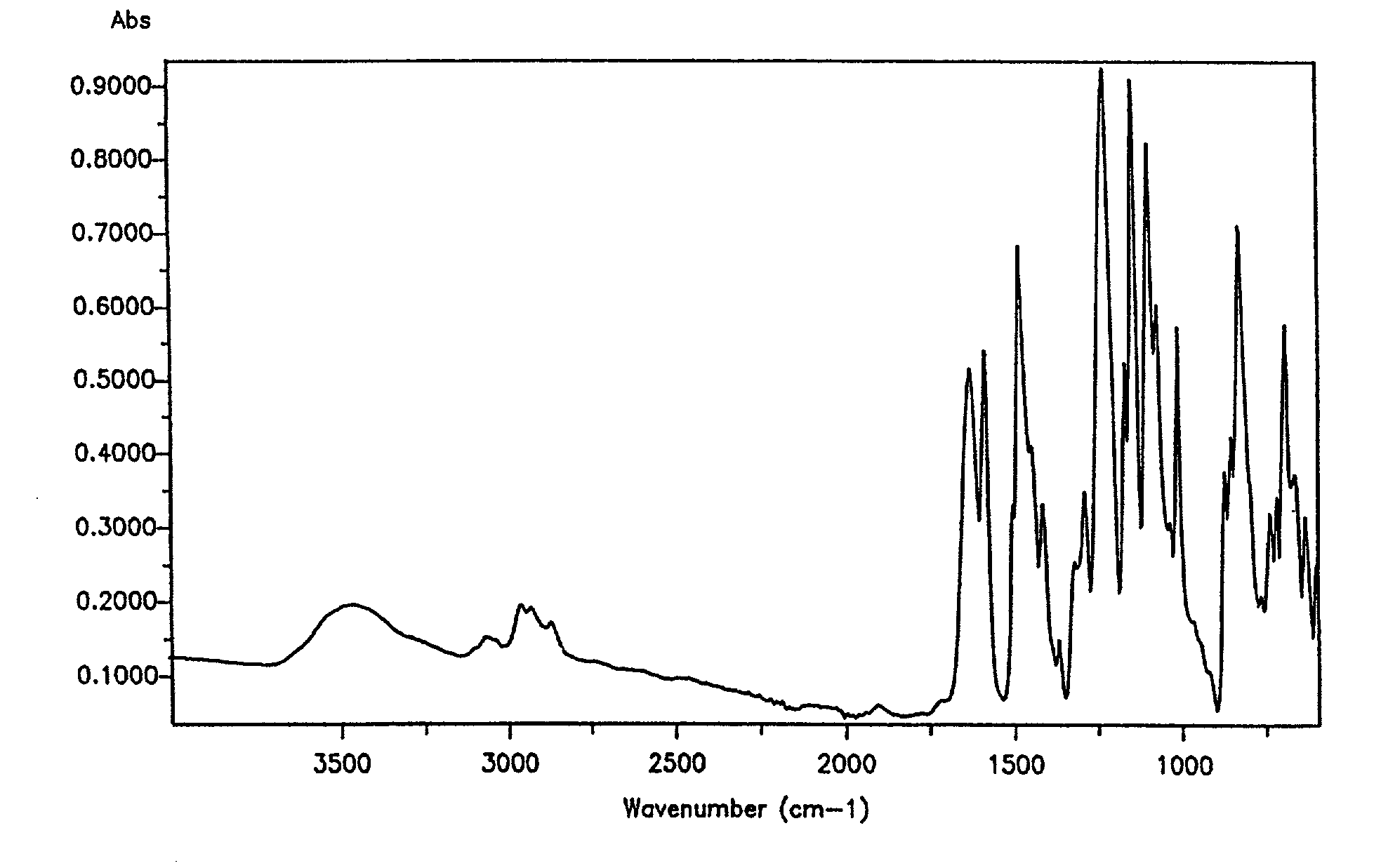Composite semipermeable membrane
a semi-permeable membrane and composite technology, applied in the direction of filtration separation, moving filter element filtering, separation process, etc., can solve the problems of high-pressure operation, publication nowhere describes the organic substance removal performance of composite hollow fiber membranes, hollow fiber membranes
- Summary
- Abstract
- Description
- Claims
- Application Information
AI Technical Summary
Benefits of technology
Problems solved by technology
Method used
Image
Examples
example 2
[0055] A composite hollow fiber membrane was prepared in the same manner as in Example 1, except that the concentration of trimesoyl chloride in the n-hexane solution was changed to 0.85% by weight. The absorption intensity ratio T, sucrose removal and water permeability were 1.02, 95.8% and 211 L / m.sup.2 / day, respectively.
example 3
[0056] A composite hollow fiber membrane was prepared in the same manner as in Example 1, except that the concentration of triethylenediamine in the amine aqueous solution was changed to 2.0% by weight and the concentration of trimesoyl chloride in the n-hexane solution was changed to 0.75% by weight. The absorption intensity ratio T, sucrose removal and water permeability were 0.16, 95.2% and 384 L / m.sup.2 / day, respectively.
examples 4-6
[0059] A spinning stock solution containing 20% by weight of polysulfone resin (Teijin Amoco Engineering Plastics Limited, Udel P-3500), 4% by weight of triethyleneglycol, 0.5% by weight of sodium laurylbenzenesulfonate and 75.5% by weight of dimethylacetamide was emitted from the outer portion of a nozzle with a double-tube structure used for the production of hollow fibers, whereas an aqueous solution of 30% by weight of dimethylacetamide and 70% by weight of water was emitted from the inner core portion of the nozzle. These solutions were passed through an air travel portion 6 cm in length and spun into a coagulation bath containing water as a main component, at a rate of 15 m / minute, thus giving a polysulfone porous hollow fiber membrane. Thereafter, the membrane was washed with water to remove residual solvent. An aqueous amine solution (2.0% by weight of piperazine, 1.0% by weight of triethylenediamine and 0.065% by weight of sodium laurylbenzenesulfonate in RO water) was prep...
PUM
| Property | Measurement | Unit |
|---|---|---|
| wavenumber | aaaaa | aaaaa |
| wavenumber | aaaaa | aaaaa |
| temperature | aaaaa | aaaaa |
Abstract
Description
Claims
Application Information
 Login to view more
Login to view more - R&D Engineer
- R&D Manager
- IP Professional
- Industry Leading Data Capabilities
- Powerful AI technology
- Patent DNA Extraction
Browse by: Latest US Patents, China's latest patents, Technical Efficacy Thesaurus, Application Domain, Technology Topic.
© 2024 PatSnap. All rights reserved.Legal|Privacy policy|Modern Slavery Act Transparency Statement|Sitemap



